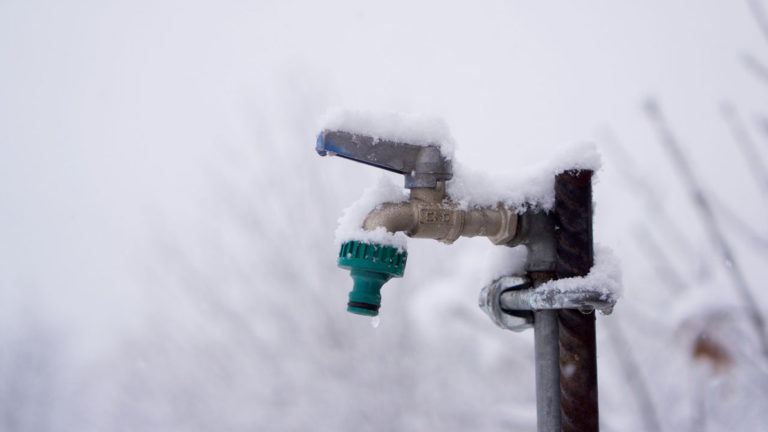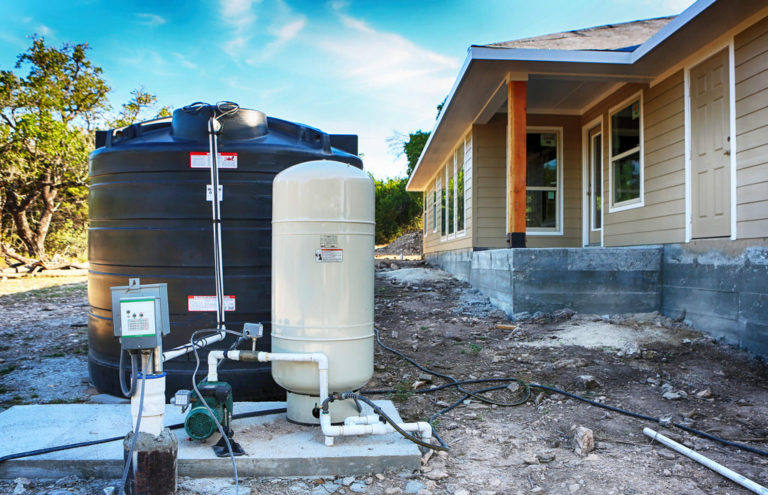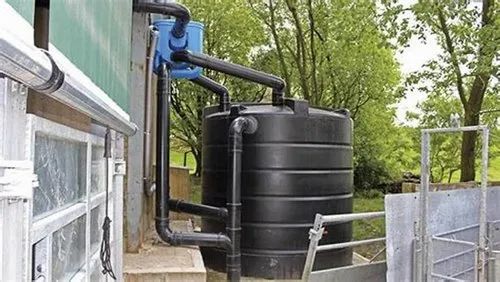Designing and building your own off-grid septic system can be a rewarding DIY project that saves you money, increases self-sufficiency, and reduces your environmental footprint.
With the right knowledge and tools, anyone can create an efficient and effective waste management solution for their home or cabin, even in areas where traditional sewer services are unavailable or unaffordable.
We’ll take you through everything you need to know to design and build a functional off-grid septic system that meets your unique needs and preferences.
From choosing the right components and materials to expert tips for ensuring proper installation and maintenance, we’ve got you covered!
Whether you live in a rural area or simply want to take charge of your own waste management, this guide is perfect for anyone looking to go off-grid with their septic needs.
So, let’s dive in and get started on designing your very own off-grid septic system!
Determine your wastewater flow rate
Calculate the daily wastewater flow rate based on the number of occupants, size of your home, and water usage. This will help you determine the size of your septic system components.
To calculate the daily wastewater flow rate, you will need to consider the number of occupants, the size of your home, and your water usage habits.
Start by counting the number of people living in your home, including children and guests.
This will give you an idea of how much wastewater will be generated on a daily basis.
Next, consider the size of your home and the number of bathrooms.
A larger home with more bathrooms will naturally produce more wastewater.
Assess your water usage habits.
Do you have a large garden or pool that requires a lot of water?
Do you take long showers or use a dishwasher frequently?
All of these factors will contribute to your daily wastewater flow rate.
To calculate the flow rate, you will need to consult a flow rate chart or consult with a septic system professional.
These charts provide a calculation based on the number of occupants and the size of your home.
Once you have determined your flow rate, you can select the appropriate septic system components to handle the wastewater generated by your home.
Remember, a properly functioning septic system is essential for protecting public health and the environment.
By taking the time to determine your wastewater flow rate and selecting the appropriate components, you can ensure that your septic system operates effectively and efficiently.
Choose a suitable site
Select a site for your septic system that is at least 100 feet away from any water sources, such as wells or surface water. The site should also be elevated and have good drainage.
Choosing a suitable site for your septic system is a important step in ensuring the proper functioning and longevity of the system.
It is essential to select a site that is at least 100 feet away from any water sources, such as wells or surface water.
This is because the septic system can contaminate groundwater and surface water, posing a significant risk to public health and the environment.
Therefore, it is important to ensure that the system is located far enough away from any water sources to minimize the risk of contamination.
Furthermore, the site should be elevated to ensure proper drainage.
The septic system relies on gravity to function correctly, and an elevated site will help to ensure that wastewater flows freely through the system and is not pooling or stagnating.
In addition, good drainage is essential to prevent the system from becoming saturated with water, which can lead to a range of problems, including backups and system failures.
Overall, choosing a suitable site for your septic system is a critical step in ensuring the proper functioning and longevity of the system.
It is important to carefully consider the location and elevation of the site to minimize the risk of contamination and ensure proper drainage.
Design the septic tank
The septic tank should be designed to hold at least 1,000 gallons of wastewater. The tank should be made of concrete or fiberglass and should have baffles to separate solid waste from liquid waste.
Designing a septic tank that can effectively handle 1,000 gallons of wastewater requires careful consideration of several factors.
The tank should be made of durable materials such as concrete or fiberglass, which can withstand the corrosive nature of the wastewater and the weight of the solids.
Baffles should be installed to separate the solid waste from the liquid waste, preventing the solids from entering the drainfield and causing damage or clogging.
The baffles should be positioned at the inlet and outlet points of the tank, ensuring that all wastewater flows through the baffles and separates the solids from the liquids.
The tank should have a riser manhole that provides safe and easy access to the tank for maintenance and cleaning.
By designing the septic tank with these features, it can effectively manage 1,000 gallons of wastewater while minimizing the risk of system failure or maintenance issues.
Choose an appropriate drainfield design
The drainfield should be designed to dispose of the treated wastewater into the soil. The design can include a series of trenches or a mound system. The size and number of drainfield components will depend on the size of your home and the number of occupants.
When selecting an appropriate drainfield design for your septic system, it is essential to choose a design that effectively disposes of treated wastewater into the soil.
A common drainfield design includes a series of trenches or a mound system.
The trench design involves digging narrow, shallow trenches in the ground, typically around 10-15 feet long and 3-4 feet deep, which are filled with clean stone and perforated pipe.
The treated wastewater is distributed evenly across the trenches, allowing it to percolate into the soil.
Alternatively, a mound system may be more suitable for your property, especially if the soil is poorly draining or has a high water table.
In this design, a raised mound of soil is created to elevate the drainfield above the surrounding soil, allowing for better drainage and evapotranspiration.
The mound is typically covered with a layer of clean stone and topped with vegetation.
Regardless of the drainfield design you choose, the size and number of components will depend on the size of your home and the number of occupants.
A larger home or one with more occupants will require a larger drainfield to accommodate the increased amount of wastewater.
It is essential to work with a licensed professional to determine the appropriate drainfield design and size for your specific needs to ensure that your septic system functions effectively and minimizes the risk of system failure or environmental impact.
Select appropriate materials
Use materials that are resistant to corrosion and can withstand the environment. For example, use PVC or CPVC for pipes and fittings, and concrete or fiberglass for the septic tank.
Choosing the appropriate materials for your septic system is important to ensure its longevity and effectiveness.
To withstand the corrosive environment of the septic tank and drainfield, select materials that are resistant to corrosion.
PVC (polyvinyl chloride) or CPVC (chlorinated polyvinyl chloride) pipes and fittings are excellent options, as they are durable and resistant to corrosion.
These materials are also lightweight, easy to handle, and can be glued together with solvent cement for a secure joint.
For the septic tank, consider using concrete or fiberglass.
These materials are impermeable to water and can withstand the weight of sludge and scum.
They are resistant to corrosion and can last for decades with proper maintenance.
By selecting appropriate materials, you can ensure the longevity of your septic system and minimize the risk of costly repairs or replacements.
Install the septic system
Install the septic system according to your design and local regulations. Make sure to inspect the system regularly to ensure that it is functioning properly.
To ensure proper wastewater management and avoid any potential health hazards, it is essential to install the septic system according to your design and local regulations.
This involves selecting the appropriate type of septic system based on your site conditions, soil analysis, and water table levels.
For instance, a conventional septic system may be suitable for sites with a well-draining soil structure, while an alternative system such as a mound or pressurized system may be required for sites with poor soil permeability or high water tables.
Once the septic system is installed, it is important to inspect it regularly to ensure that it is functioning properly.
This includes checking the drainfield for signs of erosion, monitoring the septic tank for proper operation, and ensuring that all components are in good condition.
Regular maintenance can help prevent system failures, prolong the lifespan of the equipment, and minimize the risk of contamination to groundwater and surface water.
Regular inspections can help identify potential issues before they become major problems, reducing the need for costly repairs and minimizing the impact on the environment.
Maintain the septic system
Regularly inspect and maintain the septic system to ensure that it is functioning properly. This can include pumping the septic tank, cleaning the drainfield, and monitoring water quality.
Regular maintenance is essential to ensure your septic system is functioning properly and protecting public health and the environment.
Inspections should be conducted regularly, ideally every 3-5 years, to identify any potential issues before they become major problems.
During these inspections, the septic tank should be pumped to remove any solids and sludge that have accumulated.
This helps maintain the system’s efficiency and prevent clogs in the drainfield.
The drainfield should be cleaned to remove any residual waste or debris that may have accumulated.
It’s essential to monitor water quality in and around the system to ensure it’s not contaminating surface or groundwater sources.
By performing these routine maintenance tasks, you can help prevent costly repairs and protect the health of your family, your community, and the environment.
Consider adding an auxiliary treatment component
If you have a high water table or poor soil conditions, consider adding an auxiliary treatment component, such as a sand filter or an aeration system, to improve the treatment of wastewater.
When it comes to wastewater treatment, having an auxiliary treatment component can make all the difference.
If you have a high water table or poor soil conditions, adding an additional treatment step, such as a sand filter or an aeration system, can greatly improve the treatment of wastewater.
These auxiliary components can help remove more impurities from the wastewater, resulting in a higher quality final product.
For example, a sand filter can remove suspended solids and other impurities, while an aeration system can help break down organic matter and increase the biological oxygen demand.
By incorporating an auxiliary treatment component, you can ensure that your wastewater is thoroughly treated and meets the necessary standards for safe disposal or reuse.
These auxiliary components can be customized to fit your specific needs and site conditions.
For instance, a sand filter can be designed to accommodate a variety of flow rates and types of wastewater, while an aeration system can be tailored to your specific treatment goals.
By choosing the right auxiliary treatment component, you can ensure that your wastewater treatment system is effective and efficient, and that your water is safe for use.
Want More? Dive Deeper Here!
Hey there! If you’re the type who loves going down the rabbit hole of information (like we do), you’re in the right spot. We’ve pulled together some cool reads and resources that dive a bit deeper into the stuff we chat about on our site. Whether you’re just killing time or super into the topic, these picks might just be what you’re looking for. Happy reading!






